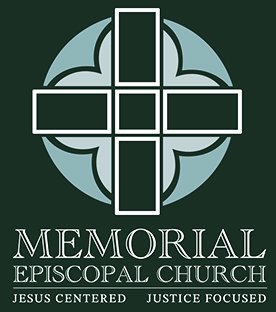The View from Bolton Street
A Time for Transfiguration
Why go up the mountain?
The story of the transfiguration is one of our treasured stories from the gospels. We hear differing but not competing accounts of this story in the Gospels of Matthew, Mark and Luke. Yet we never get an answer to the question of why. Why does Jesus go up the mountain? Why does he bring some (but not all) of the disciples with him?
Does Jesus know what is going to happen? Was this all a carefully orchestrated event that was preordained? Or was it a happy accident? Jesus and his disciples needed a break, they went for a hike and then all this happened?
Fortunately or unfortunately, we are not told.
I say fortunately because for us it means that both can be true! As we seek to bring about our own transfiguration as a community of faith, we can take comfort in the fact that Jesus’ transfiguration happened without any clear plan, and yet the Holy Spirit was definitely present in that moment! And we can also challenge ourselves to say that we should not run from the opportunities God has put before us. Or (as Peter attempted) to be content to just stay where we are.
This Sunday we have Mark’s version of the transfiguration story as our Gospel text. You have probably noticed that the veil has been lifted from the Triptych in the rear of the Church and you can expect to see more dialogue about this particular transfiguration in the coming weeks and months. As you may be aware, two years ago the vestry voted to veil the triptych until a decision could be made about its reinterpretation or replacement. The painting is a memorial to the Rev. Dr. William Meade Dame and his wife, Susan. Dr. Dame served for 45 years as rector of Memorial Episcopal Church and during his tenure aggressively sought to keep the church, the neighborhood, and the city of Baltimore segregated. He was an enthusiastic supporter of Confederate causes here in Baltimore, advocated taking the vote away from Black men, and supported a church and a community that invented housing segregation in the U.S.
It is not a bad painting on its own merits. It certainly could do with some restoration, and is a unique example of a minor late 19th/early 20th-century American painter, Frederick Lincoln Stoddard, who mainly painted murals and as a result, this is one of the few remaining examples of his large-scale works. It is, it must be said, a very white Jesus and the painting does not reflect who we are as a community or who we would aspire to be. It is possible that restoring the painting would bring out other colors, dulling the ‘white Jesus’ at the center, but the cost of such a restoration, $30,000 or more, maybe beyond our appetite or limited budget.
As we consider how might our sanctuary space be ‘transfigured’ - I invite you all to consider all of the transforming and transfiguring this community has undergone in the last 8 years. New members, revitalized worship spaces, new knowledge of our story and history, new programs, and new initiatives. We have changed how we worship during a pandemic, how we make music, and how we are led. How would you depict the transfiguration today? When you remember that Christ was transformed on a mountain, that his face changed, that he was blessed by our ancestors and by the Holy Spirit…. What does that look like to you? How would you draw that?


